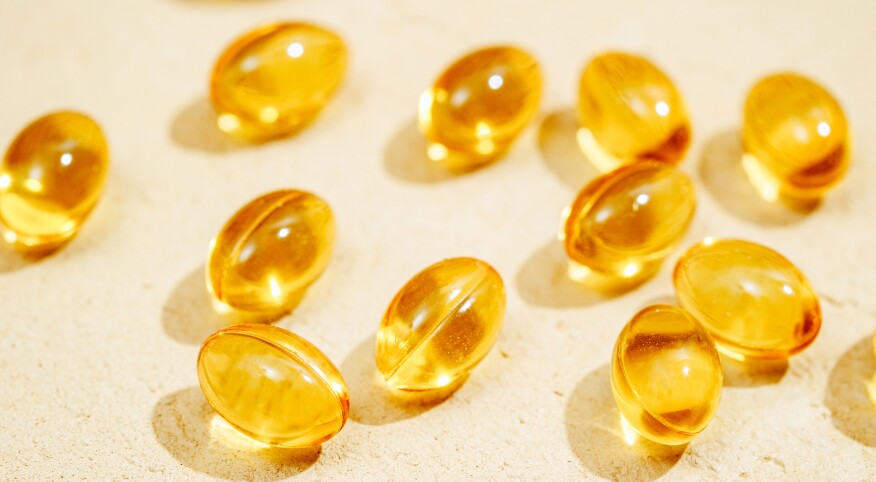Vitamin D’s ability to bolster the immune system, one tablet at a time, is growing increasingly relevant during the ongoing pandemic.
Anthony Fauci, M.D., director of the National Institute of Allergy and Infectious Diseases (NIAID) and America’s favorite doctor, takes vitamin D and recommends you do, too. Though Fauci has enjoyed a storied 36-year career as chief of NIAID through six presidential administrations, he has become a household name during the pandemic, heralded for his sober, honest communication during a frightening time. He has grown such a fan base that you can find Fauci T-shirts, socks and yard signs declaring your love. It was no surprise that when he chatted with actor Jennifer Garner on Instagram Live and said he takes vitamin D to beef up his immune system and would recommend it, people sat up and listened. But as with all supplements, it’s important to understand the vitamin.
Here’s a primer.
Who should take vitamin D?
It’s worth emphasizing that when asked about ways to boost the immune system, Fauci tells Garner the supplement is useful for those with vitamin D deficiency (emphasis added) because “that does have an impact on your susceptibility to infection.” Amy Banulis, M.D., a board-certified ob-gyn and associate medical director for Women’s and Maternal/Child Health at Kaiser Permanente, agrees, saying that we do know that adequate levels of vitamin D are important for immune function. Research scientist-turned-natural health advocate Jaya Jaya Myra, a TEDx speaker and best-selling author, tells us that some research suggests nearly 40 percent of people are vitamin D deficient. To learn if your levels are low and what supplement dose is right for you, schedule a chat with your doctor.
Though there is debate in the medical community about what precisely constitutes a vitamin D deficiency and who should be tested, Banulis says it’s clear that those who are deficient in vitamin D are generally at greater risk for infections. Without question, women in midlife who are susceptible to bone loss should be among those tested for low levels of vitamin D, according to a Harvard Medical School article. Banulis explains that it is well known that adequate levels of vitamin D are essential for strong bones by allowing for adequate calcium absorption. “This becomes even more important in perimenopausal and postmenopausal women as estrogen levels decline, which is a risk factor for osteoporosis,” she says.
What is it and how much?
The Harvard School of Public Health describes vitamin D as a nutrient we eat as well as a hormone we make. Dubbed the sunshine vitamin, your skin makes vitamin D when exposed to sunlight. During wintertime’s shorter, grayer months, it’s common to see levels dip. The question of personal dosage level is best answered by your doctor, but Banulis says that the Institute of Medicine recommends 600 international units (IU) for everyone ages 1 to 70, and 800 IU for those 70-plus. According to the Office of Dietary Supplements at the National Institutes of Health (NIH), the daily upper limit for adults is 4,000 IU. Banulis points out that there is no evidence that extra vitamin D will benefit people who are not deficient. In fact, taking too high of dosage imposes health risks.
How can I get the recommended amount of vitamin D?
Get as much vitamin D through natural sources as you can, starting with good old-fashioned sunlight. Regularly walking outdoors on a sunny day is an ideal way to receive vitamin D and reduce the risk of contracting an acute upper respiratory infection from exposure to various viruses, emphasizes Alex Tabarrok of Marginal Revolution, referencing a ScienceDirect study. Banulis says that even 15 to 20 minutes of sun on bare skin, sans SPF, provides a healthy dose of vitamin D. But it’s often hard to get enough sunlight for those with desk jobs or “confined indoors, the way many people have been this year,” says Banulis. Plus, many fastidiously wear sunscreen given the known health risks associated with exposure, which then interferes with getting the nutrient from sunshine.
Myra strongly suggests naturally incorporating vitamin D-rich foods in your diet. She notes: Wild salmon can have up to 1,300 IU of vitamin D per serving; tuna, including canned, contains 250 IU of vitamin D per serving; a 16 ounce serving of fortified milk can contain about 30 percent of your recommended daily allowance of vitamin D; and the yolk per egg from chickens given vitamin D-enriched feed may have up to 6,000 IU of the nutrient. Also, add wild mushrooms to your diet to boost nutrient levels. “They are an excellent source, packing up to 2,300 IU per 3.5 ounce serving!” says Myra.
Why does vitamin D matter right now?
Researchers at the University of Chicago found that there’s a relationship between vitamin D deficiency and the likelihood of getting COVID-19, yet warn this does not prove causation. The NIH is reluctant to definitively link the two, citing insufficient evidence, but there has been an uptick of exciting research underway exploring this connection. “Without question, the best ways to control the pandemic are mask-wearing, social distancing and good hand hygiene, which is what Fauci has been promoting since the beginning of the pandemic,” Banulis says. Perhaps thinking of vitamin D as another reliable tool to incorporate into our health toolbox is a fitting picture of its role in staying well during COVID-19. When added to other well-known interventions, it contributes to the best-case scenario for health and resilience amid the ongoing global health crisis.

Stocksy









